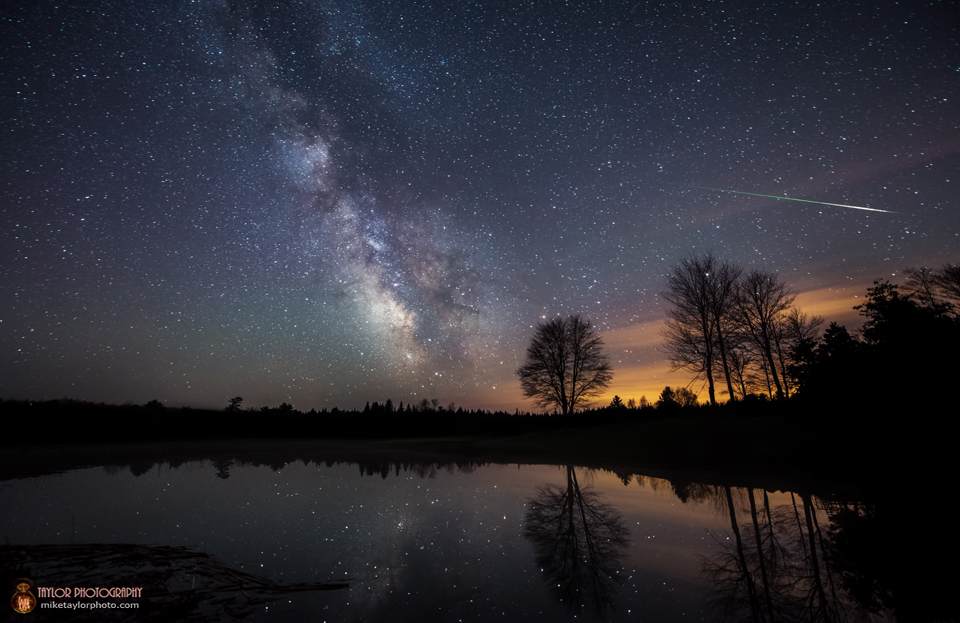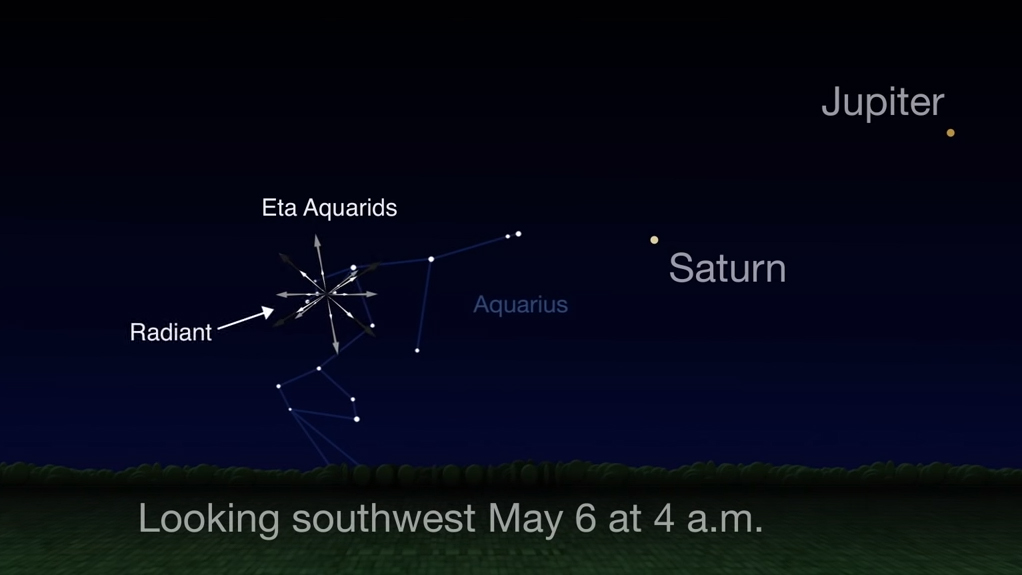Eta Aquarid Meteor Shower Peaks Tonight! Look Toward the 'Water Jar'

The Eta Aquarid meteor shower peaks tonight!
If Southern Hemisphere skywatchers look toward the water jar of the constellation Aquarius before dawn this Sunday, they can catch up to 40 shooting stars per hour. Northern Hemisphere viewers can see a few impressive "Earth-grazers," too.
The Eta Aquarid meteor shower peaks overnight from Saturday (May 4) to Sunday (May 5), when the moon will be about 1% full. The full event, however, lasts until about May 28. (Some calendars put the peak at May 5-6, when there should be excellent viewing as well.)
Related: Eta Aquarid Meteor Shower 2019: When, Where and How to See It

Meteor showers are made up of the particles in a comet's trail. The Eta Aquarids come from Halley's Comet, which last passed through the inner solar system in 1986. That object is set to return in 2061. Every year beginning around mid-April, Earth passes through the dust and debris that separated from the comet hundreds of years ago. This results in the shooting stars that observers can view, as the debris hits our atmosphere and burns up, creating vibrant streaks.
Skygazers can take advantage of the meteors' slow-paced peak. ''Unlike most major annual meteor showers, there is no sharp peak for this shower, but rather a plateau of good rates that last approximately one week, centered on May 7,'' according to the American Meteor Society website.
This meteor shower is named after Eta Aquarii, the star from which the meteors appear to emanate, a spot known as the shower's radiant. Eta Aquarii is one of the four stars that form the top of the constellation Aquarius' water jar.
Get the Space.com Newsletter
Breaking space news, the latest updates on rocket launches, skywatching events and more!
Few meteors are actually seen at the radiant, though they seem to streak from that point. Viewers standing near the equator and in the Southern Hemisphere will have the best view, while folks in northern latitudes will have to look close to the horizon to catch these meteors — setting themselves up to see fewer, but more impressive, long streaks from "Earth-grazing" meteors, according to Space.com skywatching columnist Joe Rao. Northern viewers can expect to see up to 10 meteors per hour.
Skygazers should check the skies after 2 a.m. to 3 a.m. in their local time zones, when the radiant rises. The radiant should be highest close to dawn.
For optimal viewing, NASA recommends getting away from street lights and allowing the eyes to adjust to the dark for about 30 minutes. Once the Eta Aquarids begin, they'll last until dawn.
- Eta Aquarids: Meteor Shower From Halley's Comet
- Eta Aquarid Meteors Dazzle in Spectacular 'Shooting Star' Photos
- How to See the Best Meteor Showers of 2019
Follow Doris Elin Salazar on Twitter @salazar_elin. Follow us on Twitter @Spacedotcom and on Facebook.
Join our Space Forums to keep talking space on the latest missions, night sky and more! And if you have a news tip, correction or comment, let us know at: community@space.com.

Doris is a science journalist and Space.com contributor. She received a B.A. in Sociology and Communications at Fordham University in New York City. Her first work was published in collaboration with London Mining Network, where her love of science writing was born. Her passion for astronomy started as a kid when she helped her sister build a model solar system in the Bronx. She got her first shot at astronomy writing as a Space.com editorial intern and continues to write about all things cosmic for the website. Doris has also written about microscopic plant life for Scientific American’s website and about whale calls for their print magazine. She has also written about ancient humans for Inverse, with stories ranging from how to recreate Pompeii’s cuisine to how to map the Polynesian expansion through genomics. She currently shares her home with two rabbits. Follow her on twitter at @salazar_elin.









